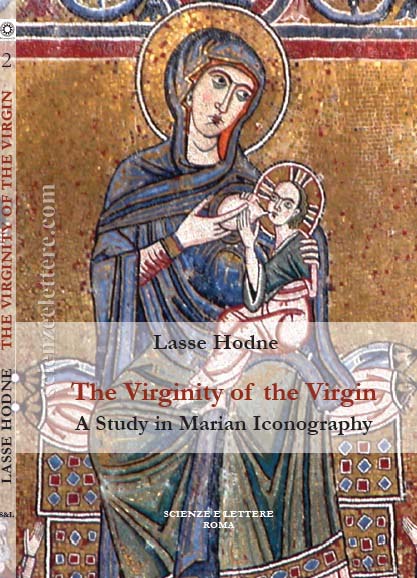The Virginity of the Virgin. A Study in Marian Iconography
- Anno: 2012
- Autore/i: Hodne Lasse
- Catalogo: Scienze e Lettere
- Argomento: Iconografia
- Collana: Palindromos. Alla ricerca delle fontidell'arte antica, medievale e moderna
- ISBN: 978-88-6687-006-7
- ISSN:
F.to 19x 26, brossura editoriale con bandelle, 138 pp., ill.ni a colori
Autor: LaSSe HoDNe is professor of art history
at the Norwegian University of Science and
Technology (NTNU) in Trondheim, Norway,
and has formerly been Vice Director at the
Norwegian Institute in Rome. His main research
interest is the iconography and iconology
of Italian Medieval and Renaissance Art.
Hodne’s other fields of research include biblical
typology in art and the use of symmetry/
asymmetry in the Medieval picture cycle.
Among his publications are a book on Marian
iconography entitled Sponsus amat sponsam:
L’unione mistica delle sante vergini con Dio
nell’arte del medioevo (Rome: Bardi, 2007).
Abstract:
This book deals with aspects of Marian iconography
related to the topic of virginity. In discussing
familiar subjects like the
Annunciation, the Marriage (or Betrothal) of
the Virgin, the Birth of Christ, the Immaculate
Conception, the Madonna del Parto and Maria
Lactans, the book pays particular attention to
the aspects that not only help recount the stories
of the Gospels but also emphasise specific
points of view regarding Mary’s perpetual virginity.
Medieval man often sought concrete explanations
to mysteries of faith like the Virgin
Birth. For example, some people thought that
Mary could maintain her intactness by conceiving
and become pregnant through her ear.
When ecclesiastical authorities declared that
Mary, like Jesus, was born without sin, there
was widespread conjecture, including among
painters, about how this had occurred.
The book discusses works of European art
from the Paleochristian period to the Counter-
Reformation, with particular emphasis on the
period between the mid-12th century and the
end of the 14th century. The book focuses on
how ideas about Mary’s virginity were expressed
through the representation of scenes from
the Gospels or, indirectly, through allegories
like the Hortus conclusus or the Porta caeli.
The book seeks to delineate the processes of
change behind the imagery, with special focus
on periods of rapid cultural transformation,
like that of the 12th century. During this time,
metaphors associated with Mary’s sexual and
marital status became laden with new connotations
that altered their original meaning, shifting
the attention away from the virtue of
abstinence toward ‘intactness’ and virginity as
values in themselves.
Contents
Introduction
Mary, Mother of God and Ever-Virgin
Part 1 - Mary, expempt from sin
Mary, “alter Eva”
The Garden of Paradise
‘Hortus conclusus’
Mary, ‘Porta Caeli’
Part 2 - Mary and the royal lineage
The Meeting at the Golden Gate
The Immaculate Conception
Anna Selbdritt
The Family Tree of Jesus
Part 3 - Mary ever-virgin
The Marriage of the Virgin
The Annunciation (Conception of Christ)
Mary Conceives through the Word
‘Sicut sol vitrum non laedit’
Part 4 - Marian mysteries
The Visitation: Mary’s meeting with Elisabeth
Madonna del Parto
The Birth of Christ
‘Maria Lactans’
Holy milk
Part 5 – Mystic weddings and the spiritual union with god
Brides of Christ and the Parable of the Ten Virgins
Celestial Weddings and Virginal Fecundity
The Celestial Reunion
Mary’s girdle
List of illustrations
Bibliography
Index



